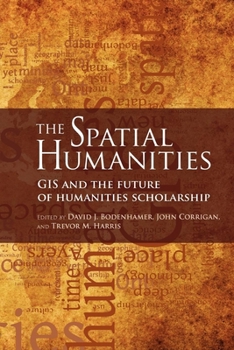The Spatial Humanities: GIS and the Future of Humanities Scholarship
(Part of the The Spatial Humanities Series)
Geographic information systems (GIS) have spurred a renewed interest in the influence of geographical space on human behavior and cultural development. Ideally GIS enables humanities scholars to discover relationships of memory, artifact, and experience that exist in a particular place and across time. Although successfully used by other disciplines, efforts by humanists to apply GIS and the spatial analytic method in their studies have been limited and halting. The Spatial Humanities aims to re-orient, and perhaps revolutionize, humanities scholarship by critically engaging the technology and specifically directing it to the subject matter of the humanities. This book explores the potential of spatial methods such as text-based geographical analysis, multimedia GIS, animated maps, deep contingency, deep mapping, and the geo-spatial semantic web to re-orient humanities scholarship. It also grapples with the need to create a language that bridges disciplines, how to re-conceptualize the humanities to include the spatial perspective, how to use GIS to analyze text and images, and suggests approaches that will prompt a long-needed reintegration of geography into the humanities.
Format:Paperback
Language:English
ISBN:0253222176
ISBN13:9780253222176
Release Date:June 2010
Publisher:Indiana University Press (Ips)
Length:222 Pages
Weight:0.80 lbs.
Dimensions:0.6" x 6.0" x 8.9"
Grade Range:Postsecondary and higher
Related Subjects
Computer Technology Engineering Human Geography Social Science Social Sciences TechnologyCustomer Reviews
0 rating





